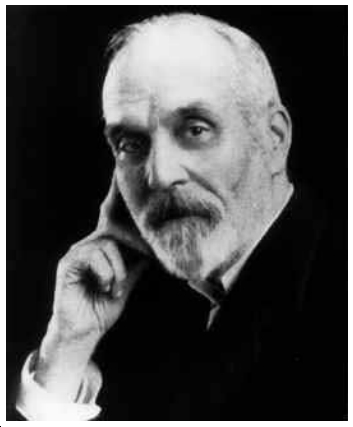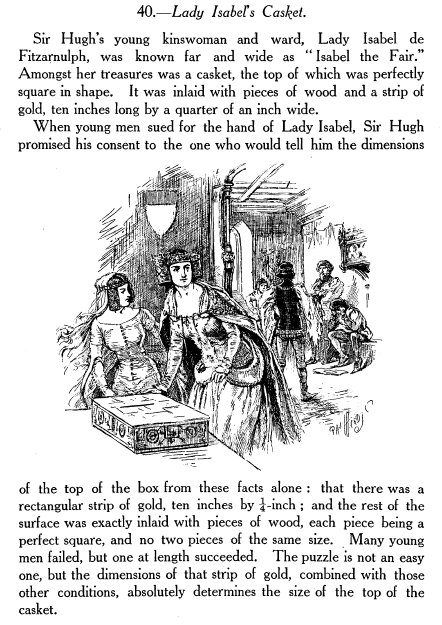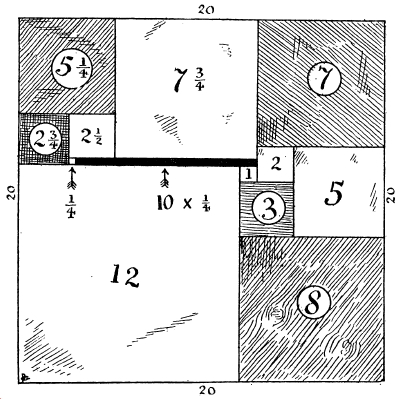Henry Ernest Dudeney (1857 - 1930)

Henry Dudeney
Henry Ernest Dudeney Born: 10 April 1857 in Mayfield, Sussex, England, died: 24 April 1930 in Lewes, Sussex, England. Dudeney came from a family which had a mathematical tradition and also a tradition of school teaching. Henry's father was a schoolmaster and his father, Henry's paternal grandfather, although he began life as a shepherd, taught himself mathematics and astronomy and left his life on the hills to become a schoolmaster in Lewes.
Henry learnt to play chess at a young age and soon became interested in chess problems. From the age of nine he was composing problems and puzzles which he published in a local paper. Although he only had a basic education, never attending college, he had a particular interest in mathematics and studied it and its history in his spare time.
As he pointed out:-
The history of mathematical puzzles entails nothing short of the actual story of the beginnings and development of exact thinking in man.
Certainly, as he realised in reading about the history of mathematics, its development is closely linked with puzzle solving.
Dudeney worked as a clerk in the Civil Service from the age of 13 but continued to study mathematics and chess. He began to write articles for magazines and joined a group of authors which included Arthur Conan Doyle. At this stage he was doing well publishing mathematical puzzles under the pseudonym 'Sphinx'. In 1884 Dudeney married and his wife, a popular novelist of the day, helped to make the family very well off financially.
Sam Loyd started sending his puzzles to England in 1893 and a correspondence started between him and Dudeney. The two were the main creators of mathematical puzzles and recreations of their day and it was natural that they should exchange ideas. Of the two puzzle experts it was Dudeney who showed the more subtle mathematical skills. He sent a large number of his puzzles to Loyd and became very upset when Loyd began to publish them under his own name.
[1] Newing describes how one of Dudeney's daughters:-
... recalled her father raging and seething with anger to such an extent that she was very frightened and, thereafter, equated Sam Loyd with the devil.
Dudeney contributed to the Strand Magazine for over 30 years, beginning after his collaboration with Loyd ended, and from around the same time he began publishing in Blighty, Cassell's, The Queen, Tit-Bits, and the Weekly Dispatch. Dudeney's very popular collections of mathematical puzzles The Canterbury Puzzles (1907), Amusements in Mathematics (1917), and Modern Puzzles published in 1926, contain a wealth of fascinating material.
Lady Isabel's Casket - 1902

Lady Isabel's Casket
The Canterbury Puzzles contained a puzzle called Lady Isabel's Casket which concerns the dissection of a square into different sized squares and a rectangle. According to David Singmaster 'Lady Isabel's Casket' appeared first in The London Magazine. 7 (Jan 1902) 584 and is the first published reference dealing with the dissection of a square into smaller different sized squares.

Lady Isabel's Casket solution
References
- A Newing, Henry Ernest Dudeney Britain's greatest puzzlist, in R K Guy and R E Woodrow (eds), The Lighter Side of Mathematics (Washington, 1994), 294-301
- MacTutor Biography for Ernest Henry Dudeney
- Chronology Of Recreational Mathematics by David Singmaster
- The Canterbury Puzzles - Henry Dudeney (public domain)